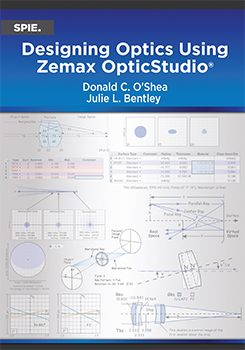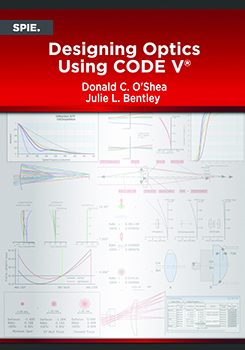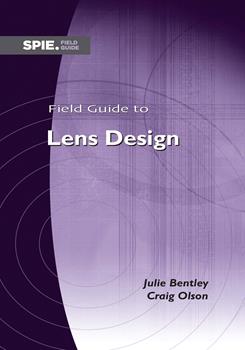
This will count as one of your downloads.
You will have access to both the presentation and article (if available).
There is no question that computers have done wonders for lens design and have enabled far more advanced designs than thought possible. The issue at hand is if mastery of both lens design fundamentals and computer software is required for success. Unfortunately, the current educational landscape places much more emphasis on the latter than the former, and many of the fundamentals impressed by Kingslake have been lost. However, three boxes of index cards belonging to Rudolf Kingslake were recently uncovered. Included in the collection are 171 lens design exam problems which present a fascinating perspective on lens design as it was taught in the pre-computer age. In this talk we’ll take a closer look at several of these forgotten problems and discuss how their solutions are still relevant for modern lens design today.
This will count as one of your downloads.
You will have access to both the presentation and article (if available).
Have you ever needed to specify, design, or analyze a lens system and wondered how to do it or where to start? Would you like a better understanding of the terminology used by lens designers? Are you interested in learning techniques to better utilize your optical design software? Have you always wanted to know what the difference is between spherical aberration and coma or where those crazy optical tolerances come from? If your answer to any of these questions is yes, this course is for you! </p>
<p> This full day course begins with a short review of geometrical optics, including system layout and lens performance criteria. A discussion of how different system specifications influence the choice of design form, achievable performance, and cost will be presented. Third-order aberration theory, design factors that affect aberrations, and the principles of aberration correction are discussed. Demonstrations of computer aided lens design (e.g. CODE V and Zemax) are given accompanied by a discussion of optimization theory, variables and constraints, and local vs. global optimization. Techniques for improving an optical design are illustrated with easy-to-understand examples. The optical fabrication and tolerancing process is explored to help explain why some optical designs require precision mechanics and precision assembly and some do not.
Have you ever wondered why refractive, reflective, and zoomed optical systems look the way that they do? Why do some optical systems have two elements and others have twenty elements? This full day course begins with a brief review of paraxial optics, third-order aberration theory, and computer aided optimization. A survey of classical refractive optical design forms from the landscape lens to the double gauss lens is given. Then more modern forms like the telephoto and retrofocus lenses, Petzval and microscope objectives, and wide angle lenses are discussed. Zoom lens principles and first order layout are presented in detail with easy-to-understand examples. Visible band color correction techniques and UV and IR design constraints are discussed. Advantages and disadvantages of reflective systems (both obscured vs. unobscured design forms) and reflective systems ranging from the Cassegrain to three and four mirror anastigmats are presented. Modern design forms and the effective use of aspheres in modern lenses will be discussed.
Have you ever wondered if adding an asphere to your optical system will make it better? Are you interested in learning techniques to incorporate manufacturable aspheres into your optical designs? Would you like a better understanding of where to put an asphere (e.g. location or material) or if you should you use more than one asphere in the your design? Have you always wanted to know what's the best way to specify and tolerance an asphere or even how to constrain the asphere during optimization so that it is manufacturable. If your answer to any of these questions is yes, this course is for you!
This course will provide attendees with a broad and useful understanding of how to design with aspheric surfaces and components. Aspheric surfaces in a lens or mirror system can bring significant benefits to the optical performance. This is not without the liabilities of added cost, delivery time, and even producibility. The course will begin with a discussion of how and when to incorporate aspherics into a variety of lens design forms. We present what aspherics will do for a design, and also what they will not do. We will then focus on understanding the differences between the standard polynomial representation and the new Forbes' polynomials for specifying, optimizing, and tolerancing aspheres. Methods to constrain the aspheric profile during optimization to maintain manufacturability will be introduced. The final part of the course will briefly review methods for manufacturing and testing aspheres.
This course is a continuation of the long-running course SPIE SC552 - Aspheric Optics, which was established and taught by Robert E. Fischer.
The primary goal of the course is to help identify the common hidden specification conflicts that can cause optical design projects to fail and the strategies for managing these conflicts. The first part of this course is the presentation of a general optical design specification document appropriate for a wide range of optical design projects. Each specification and the standard relationships between them will be discussed in detail to help determine if you have all of your specifications for a given project and if you are providing the right set of information to an optical designer. Software demos (e.g. CODE V and Zemax) showing the impact on changes in specifications will be used to highlight the hidden specification conflicts. The last part of the course is a workshop where a series of design problems are handed out. Attendees will have the opportunity to work through the exercises in small groups, find the hidden specification conflicts, and get real-time feedback on their specification documents.
This course provides the background and principles necessary to understand how optical imaging systems function, allowing you to produce a system layout which will satisfy the performance requirements of your application. This course teaches the methods and techniques of arriving at the first-order layout of an optical system by a process which determines the required components and their locations. This process will produce an image of the right size and in the right location. A special emphasis is placed on understanding the practical aspects of the design of optical systems.
<br/>
Optical system imagery can readily be calculated using the Gaussian cardinal points or by paraxial ray tracing. These principles are extended to the layout and analysis of multi-component systems. This course includes topics such as imaging with thin lenses and systems of thin lenses, stops and pupils, and afocal systems. The course starts by providing the necessary background and theory of first-order optical design followed by numerous examples of optical systems illustrating the design process and then concludes with a software (e.g. CODE V and Zemax) demonstration.
This course provides the background and principles necessary to understand how optical imaging systems function, allowing you to produce a system layout which will satisfy the performance requirements of your application.
This course teaches the methods and techniques of arriving at the first-order layout of an optical system by a process which determines the required components and their locations. This process will produce an image of the right size and in the right location. A special emphasis is placed on understanding the practical aspects of the design of optical systems.
Optical system imagery can readily be calculated using the Gaussian cardinal points or by paraxial ray tracing. These principles are extended to the layout and analysis of multi-component systems. This course includes topics such as imaging with thin lenses and systems of thin lenses, stops and pupils, and afocal systems. The course starts by providing the necessary background and theory of first-order optical design followed by numerous examples of optical systems illustrating the design process.
This course provides the background and principles necessary to understand how optical imaging systems function, and teaches the simple methods and techniques with which you can lay out a system which will satisfy the performance requirements of your application.
Optical system imagery can readily be calculated using the Gaussian cardinal points or by paraxial ray tracing. These principles are extended to the layout and analysis of multi-component systems. This course includes topics such as imaging with thin lenses and systems of thin lenses, stops and pupils, afocal systems, and radiative transfer. Numerous examples of optical systems are described.
This course provides simple methods of arriving at, and understanding, the first-order layout of an optical system by a process which determines the required components and their locations. This process will produce an image of the right size and in the right location. A special emphasis is placed on the practical aspects of the design of optical systems.
View contact details
No SPIE Account? Create one




